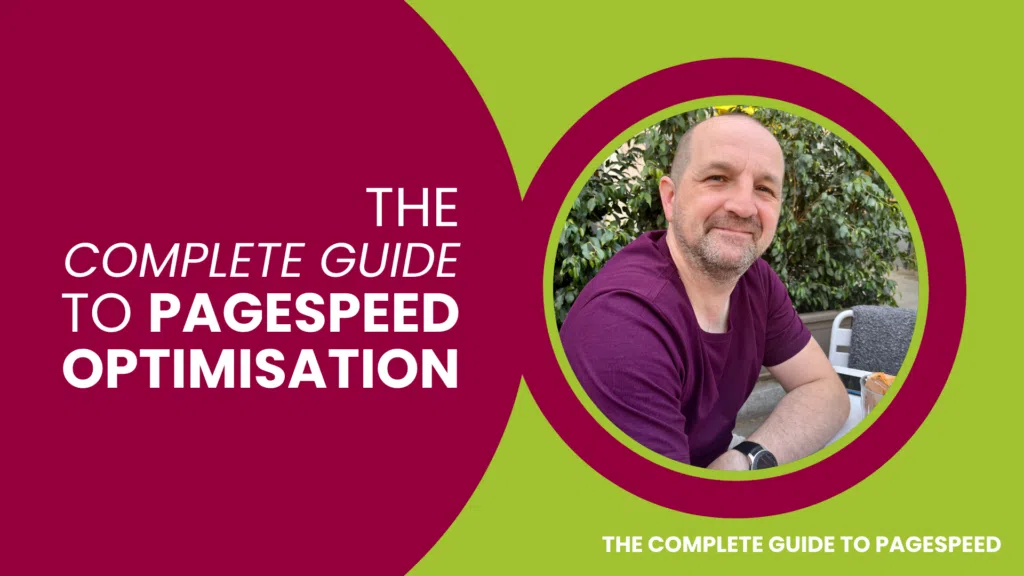The Complete Guide to Improving Page Speed
A faster-loading website has numerous benefits such as:
- Improved user experience (visitors enjoy using your site more)
- Higher search engine rankings (better for SEO, more traffic)
- Conversion Rate Optimisation (more leads and sales, higher profits)
In this Complete Guide to Page Speed Optimisation, we will explore and explain page-speed optimisation techniques, their benefits and how to implement them. Depending on your level of skill and experience, you may need a Page Speed Optimisation Agency to help with some of this work.
In This Guide:
- Pagespeed Testing Tools
- Page Speed Optimisation Techniques
- Minification of Code
- Image Optimisation
- Caching
- Lazy Loading
- Content Delivery Networks (CDNs)
- Benefits of Page Speed Optimisation
Pagespeed Testing Tools
Before you begin, it is important to understand the scale and scope of your site’s pagespeed issues.
There are two areas to consider;
- Website speed optimisation, optimising the entire website platform and therefore improving the pagespeed of every page within it, e.g. caching or lazy loading
- The optimisation of individual pages and the content they include, e.g. specific images
There are numerous tools available to test the speed of individual web pages, including Google PageSpeed Insights, Pingdom, and GTmetrix. These tools provide insights into the web page’s performance and recommendations for improvement.
Further reading: 8 Awesome Pagespeed Testing Tools
Pagespeed Optimisation Techniques
Minification of Code
Skill level: Developer
Minification is the process of removing unnecessary characters from the source code, including whitespace, line breaks, and comments. This technique reduces the file size of the HTML, CSS, and JavaScript files, which results in faster loading times.
Further reading: Pagespeed: Minification of Code
Image Optimisation
Skill level: Web Admin
Images are the biggest contributors to a webpage’s size, and optimising them can significantly improve pagespeed. Techniques such as compressing images, resizing images, and using the right format for different types of images can help reduce the image size without compromising the quality.
Optimising images involves reducing their size without affecting their quality. This can be achieved using tools such as Adobe Photoshop, GIMP, or online services like TinyPNG or Kraken.io. Depending on the platform your website is built with, you’ll also find plugins to help with image compression and optimisation too.
Further reading: How to Optimise Images to Increase Pagespeed
Caching
Skill level: Developer
Caching stores frequently accessed data on the user’s device, reducing the number of requests made to the server. This technique can be achieved using browser caching, server-side caching, or content delivery networks (CDNs).
Enabling caching involves configuring the server to send caching headers, specifying how long certain files should be cached on the user’s device. This technique can be applied to static files such as images, CSS, and JavaScript.
Further reading: How to Use Caching to Optimise Pagespeed
Lazy Loading
Skill level: Web Admin
Lazy loading is a technique that delays the loading of non-critical content until the user requests it. This technique can be applied to images, videos, and other media on the webpage. By deferring the loading of non-essential content, the website’s initial load time can be significantly reduced.
Lazy loading can be implemented using JavaScript libraries such as LazyLoad or Lozad.js. These libraries enable the deferring of non-critical content until the user scrolls down to that section of the webpage.
Further reading: Lazy Loading and How it Works
Content Delivery Networks (CDNs)
Skill level: Developer
CDNs are a network of servers that store website content in multiple locations around the world. When a user requests a web page, the server closest to the user delivers the content, reducing latency and improving page load times.
CDNs can be implemented using services such as Cloudflare, Amazon CloudFront, or Akamai. These services cache website content in multiple locations around the world, improving page load times for users accessing the website from different regions.
Further reading: Using a CDN (Content Delivery Network) to Improve Page Speed
Benefits of Pagespeed Optimisation
Improved User Experience: A faster loading website provides a better user experience. Users are more likely to stay on a website that loads quickly, reducing bounce rates and improving engagement and ultimately increasing conversion rates.
Higher Search Engine Rankings: Search engines consider pagespeed as a ranking factor. A faster loading website is likely to rank higher than a slower loading website for the same keyword.
Increased Conversion Rates: Faster loading websites have been shown to improve conversion rates. A website that loads quickly increases the chances of users completing a desired action such as making a purchase or completing an enquiry form.
Conclusion
Page-speed optimisation is an important aspect of website development that should not be ignored. Implementing page-speed optimisation techniques such as minification of code, image optimisation, caching, lazy loading, and CDNs can significantly improve a website’s performance.







